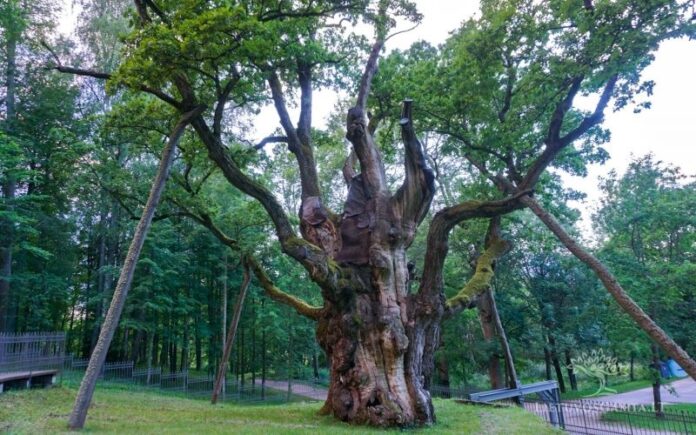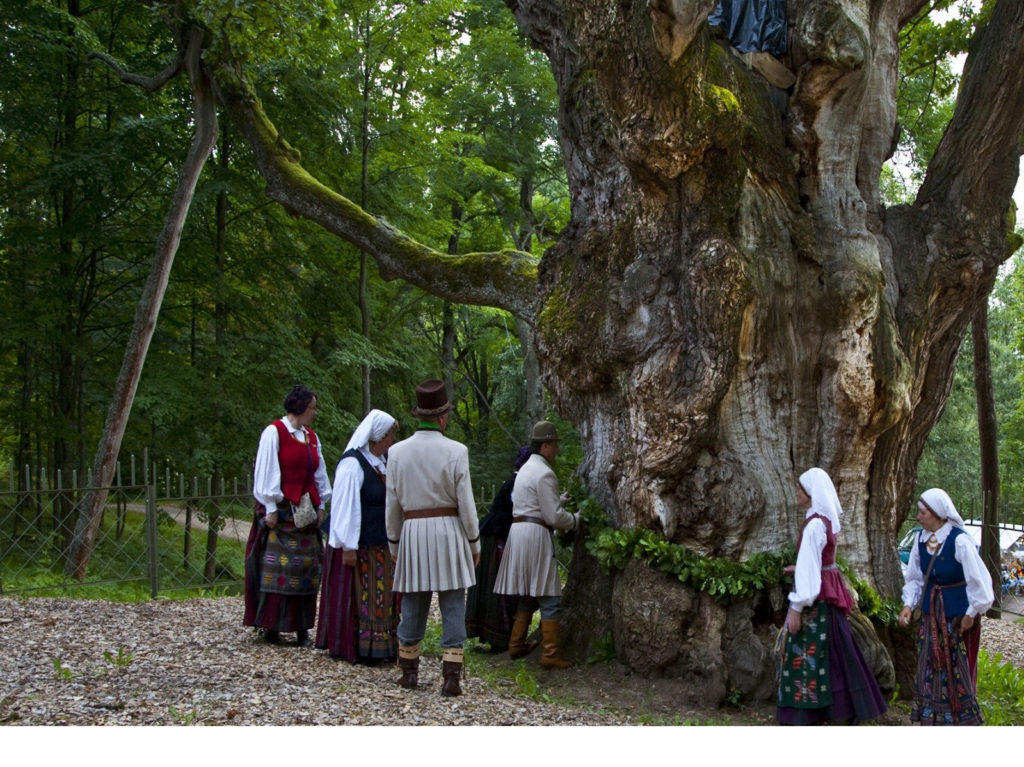
“Stelmužės ąžuolas” long revered by Lithuanians
A giant ancient tree once towered over the village of Stelmužė (Zarasai region) in Lithuania. Perhaps you have seen it? It is one of the most famous natural monuments in Lithuania and Europe – an oak tree, estimated to be at least 1500 years old.
This colossus of nature once stood 19 metres (62’ 4”) tall, possibly 23 metres (75’ 6”) tall, depending on the source. Its girth is over 9.5 metres (31 feet), and requires 9-10 adults to reach around it. Alkas.lt tells us that the tree is now encircled with a fence, so that visitors wishing to touch it will not damage the roots.
It is shorter than it was in olden times. It is said that during the feudal period, peasants cut down its tallest branch to roll it downhill as the czar rode by, in revenge for their oppression. True or not, that branch is gone, and left a gaping hole that eventually required fixing. In 1995 Zarasai foresters took 12 truckloads of rotten wood from that hollow, and tree wounds are treated with disinfectant every year, some covered with metal sheeting. Cables are used to hold the trunk upright, and several branches are supported with timbers.

Many tales are told about the oak, a species long-favoured by Lithuanians. It likely saw holy altar flames and offerings of the ancients at its feet. And indeed it must have been visited by Lithuanian dukes, Teutonic knights and Swedish troops, as well as armies led by the Kaiser, and by Hitler. A human skeleton and a French pistol found its hollow mean that it may have been a hide-out for a French soldier in Napoleon’s army fleeing from Russia.
In 2016 the oak tree was named tree of the year for the second time, and it came 13th in a European contest in 2017. It is also said that the tree has some Latvian “blood”, as it grew a few kilometres away from the Latvian border in territory that was, at one time, not Lithuanian. In the 20th century, although Zarasai was governed by Kaunas, Stelmužė and its environs were in the Latvian Courland region, which no longer exists, and maps show it belonging to Lithuania.
Although it lost another branch on March 31 of this year, scientists surmise that the oak tree could survive another 300 years, barring natural catastrophes. Acorns from this old friend have been cultivated in other areas of Lithuania for many years.
With information from alkas.lt, an article from “Zarasų kraštas”



























